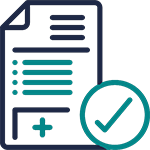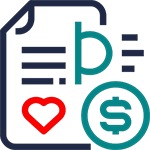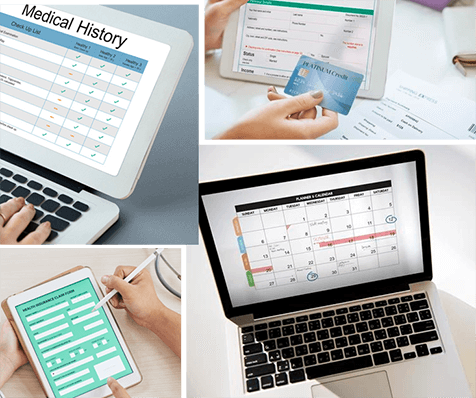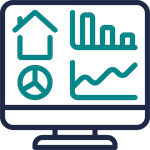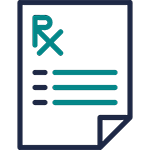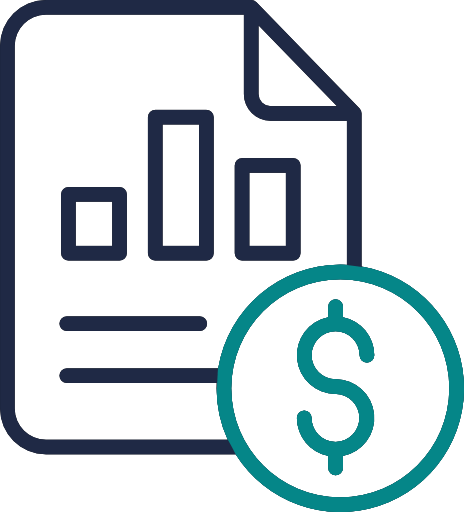What is a clearing house?
A clearinghouse is an intermediary between a purchaser and a supplier in a financial market. It verifies and confirms the transaction between two businesses. The purpose of a clearing firm is to reduce the risk of a member firm failing to honor its contractual terms.
In healthcare practices, medical billing is a complex, time-consuming process. Clearing houses service providers handle this process for healthcare practices. They screen medical claims data for errors and inaccuracies.
Additionally, they store detailed information on these claims and enable Electronic Funds Transfer (EFT) payments. Due to these clearinghouses, medical billing becomes accurate and efficient. More claims get paid on time.
Also Read: How Does Medical Billing Work? Step by Step Guide
So, without further ado, lets delve into the nine ways small healthcare practices can best utilize these clearinghouses.
Claims Processing
Clearinghouses, for small practices, act like middlemen between providers and insurance companies. They work to smooth out claims processing for healthcare practices. They allow providers to submit claims on a centralized platform, digitally.
This eliminates the need for paperwork. Moreover, it reduces executive overhead for small practices. These clearinghouses simplify workflow management for healthcare staff so they may focus more on patient care.
Moreover, they are working to ensure that claims contain all the required information and are in the correct format. Automated checks are frequently done on these claims to reduce the risk of denial or rejections. This helps practices achieve refunds quickly and maintain a steady cash flow.
On average, practices using clearinghouses record an increase of 10-15% in overall revenue. This increases the importance of clearinghouses for small practices. These firms minimize revenue leakage and effectively manage medical billing for healthcare practices.
They are considerably more beneficial for small practices where the resources are limited.
Electronic Data Interchange (EDI)
Clearinghouses ensure a smooth exchange of data between provider and payer. They encourage effective communication between providers and payers by formatting data and translating it into standardized formats. They also ensure that the data complies with HIPAA.
Clearinghouses handle tasks like claims submission, eligibility verification, and electronic remittance advice (ERA) processing to make management easier for practices. Their job is to ensure data security by establishing protected channels for the safe transfer of data.
After validating the accuracy of the data, they make sure the transfer process is according to privacy regulations. Reports suggest that using clearinghouses for data keeping reduces data breach costs by 40%.
Eligibility Verification
These firms speed up healthcare operations by providing real-time eligibility verification services. Clearinghouses integrate Electronic Health Records (EHR) in the processing, streamlining the process further by reducing the need for manual data entry.
They provide up-to-date information on insurance details so providers may check if the patient is eligible at the point of care. They help providers make informed decisions by responding to their queries about the eligibility of patients in real-time.
These queries may be about the billing process or treatment plans. Making informed decisions reduces the risk of claim rejection. Clearinghouses generate valuable reports and analytics on eligibility verification, enhancing operational efficiency.
Claim Scrubbing
Clearinghouses use advanced technologies to identify and correct errors before claims get submitted to insurance payers. Claim scrubbing is an integral part of revenue cycle management and helps reduce the risk of delays, rejections, and denials.
Clearinghouses offer tailored scrubbing rules to suit the practice’s needs. Live feedback during the scrubbing process minimizes disruptions and delays. Moreover, with clearinghouses, scrubbing processes can be monitored and improved on request.
Electronic Remittance Advice (ERA) Processing
ERAs are documents containing detailed information on claim outcomes and payment amounts. They also explain how a healthcare plan has adjusted claim charges. Clearinghouses effectively act as intermediaries in processing Electronic Remittance Advice (ERA).
They help to restore claim payments. When clearinghouses receive standardized ERAs, they translate them into readable formats that are compatible with the provider’s system. Clearinghouses also use automated technology to update relevant documents.
Credentialing Services
By outsourcing credentialing services to clearinghouses, hospitals can ensure that their focus stays on providing patient care. They make sure that providers meet regulatory requirements. Clearinghouses ensure that patients receive care from competent and professional providers.
This increases confidence in the healthcare system. They promote collaborations and referrals among providers. In this way, clearinghouses successfully create a network of trusted professionals.
Through cooperation, this network works as an effective bridge between different healthcare settings, allowing practices to deliver better patient care. Outsourced credentialing services for providers allows small practices to allocate their resources better.
Claim Status Inquiry
Among the best ways to utilize clearinghouses is to use them to monitor the status of submitted claims. This access enables providers to identify and rectify any issues noticed, proactively.
Addressing problems with claims is sped up because of clearing houses that improve cash flow and keep any small practice running efficiently. Clearinghouses connect providers to payers. They enable communication that leads to timely reimbursements.
Transparent claim status inquiry allows providers to regulate their revenue cycle management.
Analytics and Reporting
Clearinghouses offer tools that can be used to attain insights into a practice’s revenue cycle performance. A practitioner can examine acceptance rates of claims, patterns of denials, and the amounts of reimbursements to establish the right strategies to increase income generation.
Through analytics reports, healthcare practices can boast financial performance and achieve sustainable growth.
Also Read: Keep Track of These 7 KPIs to Improve Your Practice
Integrating with Practice Management Systems
Clearinghouses integrate smoothly with management systems. They carry out automatic data exchange to cut down on the number of errors and get a high precision rate. Providers can access clearinghouse services directly within their workflows. This increases efficiency.
Practices can process claims with no hindrances and verify eligibility with integrated clearinghouses. This approach saves time, allowing providers to focus on patient care.
Coordinated techniques increase the efficiency of revenue cycle management (RCM) by increasing data accuracy and decreasing the load on administration. Providers manage revenue streams and achieve better financial outcomes.
Finally, the integration of functions cuts down on overheads and streamlines work to focus on patient care delivery while ensuring services are delivered.
Conclusion
In conclusion, the most efficient way to manage medical billing for small practices is by hiring clearinghouses to handle the work for you. Small practices do not only cut costs by hiring clearing houses but also minimize errors in their medical billing processes and reports.
In today’s world, it is best to utilize these services to ensure that your small practice gets the most benefits.



